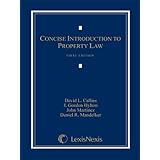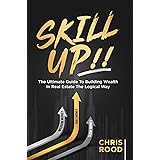Building wealth through property ownership is a goal for many, and understanding an effective real estate investing strategy is key to achieving it. In the accompanying video, insights into a personal approach to accumulating over $4,000,000 in real estate are shared. This detailed guide expands upon those principles, offering a deeper dive into market dynamics, strategic acquisition, and long-term holding strategies that can be implemented by aspiring investors.
The journey to significant real estate holdings often begins with a clear philosophy and a consistent approach. A core belief that has driven this particular real estate investing strategy is the continuous reinvestment of income into new properties. This method is underpinned by several powerful advantages that make real estate an attractive asset class, even amidst fluctuating market conditions.
Understanding the Pillars of a Millionaire Real Estate Investing Strategy
The rationale behind aggressive real estate acquisition is multifaceted, drawing on distinct financial benefits that are often unique to this asset class. An examination of these foundational principles reveals why this type of long-term real estate investing strategy can be so impactful for wealth generation.
1. Leveraging Affordable Capital for Property Acquisition
One of the most compelling aspects of real estate investment is the ability to utilize borrowed money at relatively low interest rates. Obtaining a fixed 30-year loan allows investors to lock in financing costs for decades, often at rates that are just slightly above the prevailing inflation rate. This means that a significant asset can be acquired with a smaller upfront capital outlay, amplifying potential returns.
Imagine if a property costing $1,000,000 is purchased with a 20% down payment of $200,000. The remaining $800,000 is financed at a fixed interest rate. Over time, as inflation erodes the purchasing power of money, the real cost of those fixed mortgage payments decreases. This effectively allows an investor to control a substantial asset for a fraction of its total value, with the debt being serviced by future, less valuable dollars.
2. Maximizing Returns Through Strategic Financial Leverage
Beyond simply borrowing money, the concept of leverage in real estate allows investors to achieve a higher return on their initial investment. This is because the property’s appreciation and rental income are applied to the total value of the asset, not just the equity invested.
For instance, if a $1,000,000 property appreciates by 5% in a year, its value increases by $50,000. If the investor only put $200,000 down, that $50,000 gain represents a 25% return on the cash invested ($50,000 / $200,000), excluding financing costs and operating expenses. This magnified return on equity is a powerful driver of wealth accumulation for a savvy real estate investing strategy.
3. Generating Consistent Cash Flow from Investment Properties
Many real estate investments are acquired with the intention of generating rental income that exceeds the monthly expenses, including mortgage payments, property taxes, insurance, and maintenance. This positive cash flow provides a consistent stream of passive income, which can be reinvested or used to cover other financial obligations.
A well-chosen property in an area with strong rental demand can provide predictable income, offering financial stability and an additional layer of financial freedom. This cash flow component is particularly attractive for those seeking to build a portfolio that can eventually fund their lifestyle or retirement.
4. Leveraging Significant Tax Advantages in Real Estate
Real estate investing offers several valuable tax benefits that can enhance overall returns. These can include deductions for mortgage interest, property taxes, depreciation, operating expenses, and even certain travel related to property management.
It should be noted that recent changes, such as the SALT (State and Local Tax) deduction cap and the limitation on mortgage interest deductions for primary residences (now capped on the first $750,000 of the mortgage), have shifted some dynamics. However, for investment properties, many of these deductions remain robust, allowing investors to reduce their taxable income and retain more capital. Depreciation, for instance, allows for a non-cash deduction that can significantly lower an investor’s taxable income, even if the property is appreciating in value.
5. Believing in Long-Term Property Appreciation
While short-term market fluctuations can occur, the long-term trend for real estate values in many desirable areas tends to be upward. As populations grow, and land becomes scarcer, property values historically appreciate over extended periods. This long-term appreciation is a cornerstone of a patient real estate investing strategy.
Even if property values experience temporary dips, an investor with a 15-to-30-year horizon is often able to weather these cycles. The focus remains on the intrinsic value of the asset and its ability to generate income, with market value gains viewed as an added bonus over the long run.
Navigating Current Market Conditions and Uncertainties
The real estate market is rarely static; it is constantly influenced by economic indicators, interest rates, and buyer sentiment. A successful real estate investing strategy requires an understanding of these shifts and how to respond strategically.
Market Shifts in High-Demand Areas
Observations from markets like Los Angeles reveal distinct segments behaving differently. Properties priced above $2,500,000 are seen to be taking significantly longer to sell, indicating a thinner buyer pool and increased selectivity. This suggests that the luxury market may offer opportunities for buyers with substantial capital who are willing to negotiate.
Conversely, entry-level price points are experiencing intense bidding wars, with properties selling significantly over what might be considered realistic value. This competitive environment, fueled by limited inventory and high demand, presents a challenge for investors seeking value. The shift is partly attributed to buyers becoming more price-sensitive, seeking to maximize the remaining tax advantages in lower price brackets.
Addressing Fears of a Market Correction
Concerns about a potential market correction are always present, especially in uncertain economic times. However, it is often argued that sitting on the sidelines out of fear can lead to missed opportunities. No one can perfectly predict short-term market movements; even expert predictions regarding interest rates can be quickly overturned.
A crucial distinction from previous market downturns, such as the 2006-2007 period, is the quality of current buyers. Today, lending standards are much stricter, meaning most purchasers are highly qualified with substantial down payments, excellent credit, verifiable income, and fixed-rate mortgages. Many are owner-users rather than speculative flippers, adding a layer of stability to the market. This robust buyer profile suggests that in the event of a downturn, many homeowners will have the financial capacity and long-term intention to ride out fluctuations rather than being forced to sell, thereby providing a floor of support for property values. Furthermore, significant cash reserves are currently being held by wealthy individuals, poised to re-enter the market if prices soften, which could mitigate steep declines.
The Art of Finding Value and Securing the Best Deals
In any market, the ability to find and secure undervalued properties is paramount to a successful real estate investing strategy. This involves a combination of patience, thorough market knowledge, and strategic negotiation.
1. Prioritizing Value Over Market Fluctuations
A fundamental principle is to acquire properties at a price point where, even if the market experiences a downturn, the worst-case scenario is breaking even. Imagine a property listed for $1,700,000 that requires substantial renovations or has been poorly marketed. Through strategic negotiation and a quick close, it might be possible to acquire it for $1,350,000.
In this hypothetical scenario, even if the market drops by 10-15%, the investor’s entry price provides a buffer against losses. Similarly, acquiring a property for $1,500,000 and investing $200,000 in renovations to bring its value up to $2,000,000 creates immediate equity. Should the market decline by 15%, the investor would still be at a break-even point on their total investment of $1,700,000. This approach prioritizes intrinsic value and downside protection, aligning with a long-term real estate investing strategy.
2. The Indispensable Role of Patience in Property Search
Finding genuinely good deals requires immense patience and discipline. It is common for investors to spend months, or even longer, meticulously searching through hundreds of listings before identifying suitable opportunities. The process involves tracking every property that comes on the market, noting price reductions, and observing which properties enter escrow and eventually sell.
This rigorous approach prevents emotional purchases or succumbing to the fear of missing out (FOMO). Knowing that “there’s always another deal” empowers an investor to walk away from properties that do not meet their criteria for value, location, or potential for improvement. This disciplined mindset is crucial for long-term success in a competitive market and is a cornerstone of a sound real estate investing strategy.
3. Strategic Approaches to Discovering Undervalued Properties
Two primary tactics can be employed to uncover properties that offer exceptional value, even in tight markets:
3.1. Identifying Poorly Marketed Listings: Occasionally, a property enters the market with significant marketing deficiencies. This can include incorrect square footage, low-quality photographs, or inaccurate bedroom/bathroom counts. These errors often lead to the property being priced below its true market value because the seller and their agent may not fully understand its potential.
Imagine if an investor is vigilant in monitoring new listings daily. Upon spotting a property with glaring marketing flaws, quick action is advised. Being among the first to view the property and submit an offer can secure a deal significantly below market value, as was the case with a duplex purchased 15% below its worth within 24 hours of listing after six months of dedicated searching. This demonstrates that unique opportunities can be found through diligent, daily monitoring.
3.2. Capitalizing on Stale Listings: Properties that have lingered on the market for an extended period often become stigmatized, even if they eventually receive price reductions that make them attractive. Initially, a property might be overpriced, causing it to lose momentum. Or, it could have been well-priced but suffered from poor marketing. Over time, as prices are incrementally reduced, the property can become a genuinely good deal, but buyers often avoid it, assuming there must be an inherent flaw due to its long market tenure.
These “stale” listings represent a significant opportunity for astute investors. Such properties should be thoroughly investigated, as they may only require better presentation or a small investment to unlock their true potential. Negotiating aggressively for a quick close, with full knowledge of the property’s intrinsic value and potential upside, can lead to substantial gains. The key is to overcome the psychological barrier associated with old listings and conduct thorough due diligence, embodying a patient and calculated real estate investing strategy.









